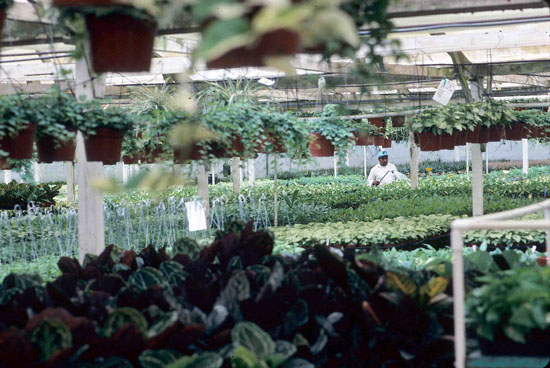Issue 16, September 23, 2013
Neonicotinoids in Garden Centers
Friends of the Earth recently published a pilot study on neonicotinoid insecticides found in bedding plants purchased at Home Depot, Lowe's, and Orchard Supply Hardware in California, Minnesota, and Washington, D.C. Click here for the published 33 page report. The research results are presented in five pages with an additional five pages of materials and methods.
The research involved the analysis of 13 small, herbaceous plants for the presence of neonicotinoid insecticides in the ground-up plant material consisting of stems, leaves, and flowers. Various levels of the neonicotinoids acetamiprid, clothianidin, dinotefuran, imidacloprid, and thiamethoxam were found in the analyses. They are all labeled for use on bedding plants. The results and conclusions repeatedly state that this is a pilot study that cannot be used to make generalizations about the insecticide content in garden center plants in general. It is also stated that levels of these insecticides are typically lower in the nectar and pollen primarily consumed by pollinators.

Greenhouse with houseplants.
However, much of the report suggests the use of consumer pressure to get retail outlets to sell only plants that were not treated with neonicotinoids and to stop selling neonicotinoid insecticides in order to save bees and other pollinators. The report also encourages the public to pressure EPA and other government agencies to put a moratorium on the use of all neonicotinoid insecticides on plants attractive to pollinators until further research is conducted. This portion has been picked up by various advocacy groups and is being promoted through various mass media.
There are research studies showing that clothianidin, imidacloprid, and thiamethoxam applied as seed treatments get into the pollen of some plants and affect honey bee and bumblebee colony survival even at relatively low levels. Various research studies indicate that acetamiprid and dinotefuran apparently are not problematic in nectar or pollen when applied according to the label. The recent incidents in Oregon of bumblebee kills from dinotefuran applications were the result of off-label applications.
The new labeling to protect pollinators discussed in another article in this newsletter is an effort by EPA to reduce the impact on pollinators by neonicotinoid insecticides. (Phil Nixon)
Author:
Phil Nixon